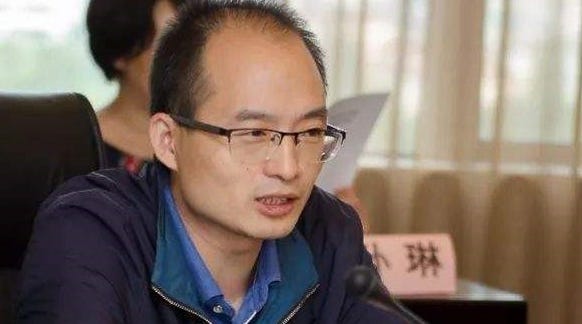consumption tax reform—how is this supporting policy?
devolves more collection and revenue rights to heavily populated regions
gives localities firmer financial base
supports long-term goal of lifting domestic consumption
Shifting the consumption tax from the production to the retail stage is expected to roll out in 2025. In the works since 2019, the March 2025 Government Work Report called to step up the pace. The reform gradually devolves more collection and revenue rights to local governments, above all in economically powerful, consumption-heavy provinces.
Part of a broader action to bolster local government finances, the shift aims to reduce reliance on land sales as a source of local revenue. The revenue impact dominates discussion: boosting local finances must come first; a consumption boost is expected to follow.
what is the consumption tax?
Consumption tax has been, counterintuitively, levied on producers of high-polluting, energy-intensive, non-renewable and luxury goods. Making up, in theory, for negative externalities. It currently applies to 15 categories of goods, including luxury watches, tobacco products, refined oils, small autos, and batteries, and is primarily collected from medium- to large-sized firms.
Tobacco, liquor, autos and fuel yield 98 percent of the revenues, which accrue entirely to the centre.
context
The consumption tax was a byproduct of the 1994 tax reform, a ‘big bang’ fiscal event whereby Beijing rectified longstanding budget shortfalls, reclaiming a lion’s share from local governments. The latter were compensated with a first claim on land sales proceeds. Downstream consequences include mismatched centre/local fiscal heft and spending obligations. Localities were incentivised to raise funds via morally and politically riskier channels, such as land finance and hidden debt.
addressing mismatch
Consumption tax reform aims to ease the central-local fiscal mismatch.
Central and local revenues have both declined since 2012. Apart from foreign affairs and defence spending, localities shoulder most expenses, notes Lyu Bingyang 吕冰洋 Renmin University. Left with 45 percent of revenues in 2024, they cover 86 percent of expenses. Transfer payments from the centre went some way to fill the gap.
Since 2021, proceeds from land sales, a proverbial local government cash-cow, plunged along with real estate sales shrinking 44 percent. A crackdown on LGFV (local government financing vehicle) hidden debt saw off-balance sheet credit vanish from many a playbook.
Given a new mantra of building a 'consumption economy', localities are meanwhile on notice to ramp up spending on healthcare, education and social services, freeing up cash for other spending. Tight on funds, localities resort to selling assets, hiking fines and illegal ‘distant water fishing’. They excavate firms’ tax records to reclaim historical evasions, placing an already stressed business sector under further angst.
Government bond issues rose in H1 2025, banking on renewed economic growth. While offering relief, warn economists, this evades radical reform only to lose in the long run.
reform goals
Local budget issues aside, argues Wang Yi 汪毅 China Great Wall Securities chief economist, tax reform should function to
adjust for negative externalities
i.e. consumption of luxury goods and highly polluting items
replace inefficient regulations, e.g. in driving restrictions and auto purchase caps
dampen industry competition
reward localities for focusing on consumption rather than investment
If the downstream reform coincides with income sharing with localities, the tax base and fiscal resources will rise for most regions. This would ease fiscal pressure on the state, hopes Luo Zhiheng 罗志恒 Yuekai Securities.
Would this change localities’ investment obsession? Only a broad-based consumption tax would yield this, argues Liu Shangxi 刘尚希 Chinese Academy of Fiscal Sciences. The current tax is less than 9 percent of total PRC tax revenue: impact on localities is limited.
Specific items only are subject to consumption taxes; boosting consumption, argues Luo, rests on boosting household incomes, social security and public services.
winners and losers
Collection cost hikes and greater income gaps between regions are top concerns, warns Li Hua 李华 Shandong University Tax Economics Research Centre.
Local government tax income will rise. Yet some provinces may see a fall in consumption tax revenues in the early stages. Local fiscal stability is threatened, finds Liu Rong 刘蓉 Southwestern University of Finance and Economy. Tobacco, oil and auto producers like Yunnan, Shanghai, Guizhou, Hubei and Hunan will lose revenue if taxes move downstream, forecasts China Galaxy Securities; provinces at the retail end will meanwhile see income growth.
Consumption tax income will, in general, shift from producer to consumer regions; some central revenue will be transferred to make up for losses, asserts Liu Zuo 刘佐, former State Administration of Taxation General Office deputy director.
consumption tax changes
ways forward
Transfer payments to cover the reform transition period should be applied, suggests Luo Zhiheng, avoiding fiscal gaps; reform should start with high-value goods, that are easier to manage in administrative terms: motorbikes, small vehicles, yachts, luxury watches, jewellery and the like.
Adjustment can be vary according to products, posits Wang Yi 汪毅
rates may remain constant for luxury goods, raising the revenue
they may decrease for mass consumer goods, maintaining revenue while improving the economy
Should tax rates remain constant while collection moves downstream, firms will need to consider bearing the burden themselves, rather than shifting it to consumers, posits Wang, and explore the impact this will have on market prices.
Following the reform, the central-local split of consumption tax revenue in wealthier, more densely populated, consumption-heavy provinces will shift in favour of local governments. The exact percentage split is still being debated and may vary by region and stage of reform rollout. But the overarching trend is toward greater local retention of consumption tax revenue, above all in provinces with strong consumer markets
profiles
Luo Zhiheng 罗志恒 | Yuekai Securities chief economist
The point of this round of reform is to boost localities’ fiscal power. It will be more proactive in 2025, marked by intensity, rollout speed, more diverse tools, improved structural targeting, smoother market liaison, and tighter cross-policy coordination, prioritising development.
In the long term, this reform supports green development and common prosperity, deserving application to sectors with the least impact on everyday consumers: high-end private clubs, luxury hotels and high-pollution industry.
Taking a PhD in economics at the MoF-affiliated Chinese Academy of Fiscal Science, Luo worked for large PRC securities firms. Joining roundtables organised by central agencies like NDRC and MoF, he regularly advises the leadership.
Lyu Bingyang 吕冰洋 | Renmin University finance professor
Fiscal resources and expenditure are mismatched due to overlapping obligations and growing fiscal pressure on lower-level administrations due to a downward shift in spending tasks.
Adjusting local responsibilities relies on deeper institutional reform, which is nigh intractable. Division of fiscal power is more flexible; hence is where fiscal tug of war takes place between different levels of government.
Holding a doctorate from Renmin University, Lyu worked in a city-level tax agency in Shandong, his home province. He later turned to research. A tax system pundit, he has worked at his alma mater since 2008 as a finance professor and director of the Institute of Fiscal and Tax Research.
are you overwhelmed by emails? use the app—it’s way better







